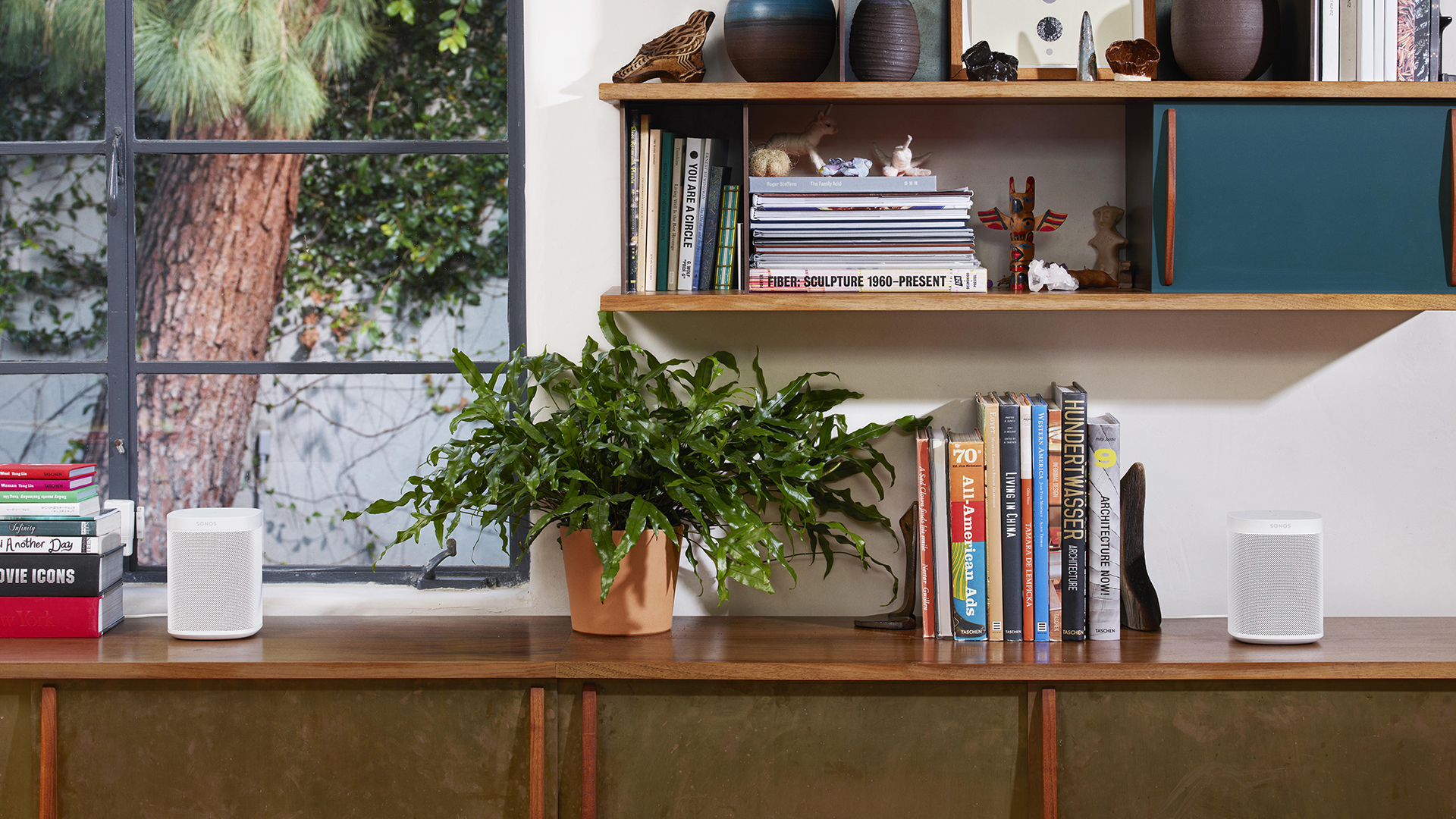Sonos finally cans controversial Recycle Mode for older wireless speakers
Sonos speaker owners can still save money, though

Wireless speaker manufacturer Sonos has changed its controversial Trade Up program, so that you don't have to kill your old Sonos speaker if you want to save money on a newer model like the Sonos Move or Sonos One.
The program, which offered a 30% discount on new models to owners of older Sonos speakers, originally required customers to put their old speaker into Recycle Mode, rendering it totally unusable.
- Need a Bluetooth speaker? Read our Sonos Move review
- Or, check out our Sonos One review
- These are the best wireless speakers of 2020
The new move means that you can keep your old Sonos speaker and still claim that 30% discount.
Eligible speakers include the Sonos Connect, Connect:Amp, ZP80, ZP90, ZP100, and ZP120 – as well as the Sonos Play:1, which has now been discontinued, and replaced by the Sonos One and One SL.
To take advantage of the program, you'll need to head to the Sonos app, select My Account, and then System. Here you simply need to enter the serial number of your old device (you can do this with multiple speakers) and you'll get the 30% discount.
Once you've confirmed within in the Sonos app, you'll receive your discount to be put towards a new device, whether you opt for the Move, soundbars like the Beam and the Playbase, or wireless speakers like the Play:5, or the One.
Waste not, want not
While Sonos can be commended for its efforts to reduce e-waste (electronic waste) and encourage its customers to recycle unwanted gadgets, requiring its users to effectively destroy products that may still work perfectly seemed a bit, well, mean – and could actually be more wasteful than allowing customers to resell or keep using their old devices.
Sign up for breaking news, reviews, opinion, top tech deals, and more.
When Sonos introduced the Trade Up program in October last year, customers were required to effectively kill old devices to take advantage of that 30% discount; putting speakers into Recycle Mode meant that their data was wiped and they were permanently deactivated.
You had a few options when it comes to recycling; you can either take your old Sonos speakers to a certified e-recycling centre or a participating retailer, or printing off a pre-paid shipping label and sending your old speakers back to Sonos.
A Sonos spokesperson told us that it "respects the customer’s right to decide for themselves when a product has reached the end of its useful life".
They continued: "So, while we are fully committed to supporting customers that wish to recycle their old hardware, we removed the Recycle Mode requirement from the program. Unfortunately, we cannot return or reactivate products already put into recycle mode, but if customers do have any questions or concerns about existing or pending upgrades, our care team is ready to assist."

Sonos recently came under fire after announcing that that it will no longer provide software updates and ongoing support for a number of its legacy products, including the original Sonos Play: 5.
On top of the 2010 Play:5, Sonos will cease updates in May for the Connect and Connect Amp, the original Zone Players, the CR200, and Bridge. It's important to note that this doesn't mean your old Sonos speaker will stop working – it just won't receive any new features from May onwards.
This could prove a problem for anyone who uses one of these speakers as part of a multi-room setup, as each speaker needs to be using the same firmware.
This could stop your newer Sonos speaker from receiving the updates it needs; the solution of course, is to disconnect the offending speaker (but then your multi-room setup will be missing one component, which isn't ideal if it consists of only two speakers to begin with).
While Sonos confirmed that it will "monitor and deal with bugs in the future, should they arise" in these older speakers, many customers bought these speakers with the expectation that they would work for decades, like traditional Hi-Fi systems.
In Sonos' defense, the technical capabilities of these older speakers meant that they couldn't support new updates even if they wanted to, due to limitations on memory and processing power.
Even so, Sonos CEO Patrick Spence issued an apology to fans on Twitter:
“We heard you. We did not get this right from the start,” Spence says in the letter, apologizing for Sonos preemptively ending support for older Sonos devices like the original Play:5, and going on to claim that those products will now receive bug fixes and security patches “for as long as possible.”

Olivia was previously TechRadar's Senior Editor - Home Entertainment, covering everything from headphones to TVs. Based in London, she's a popular music graduate who worked in the music industry before finding her calling in journalism. She's previously been interviewed on BBC Radio 5 Live on the subject of multi-room audio, chaired panel discussions on diversity in music festival lineups, and her bylines include T3, Stereoboard, What to Watch, Top Ten Reviews, Creative Bloq, and Croco Magazine. Olivia now has a career in PR.